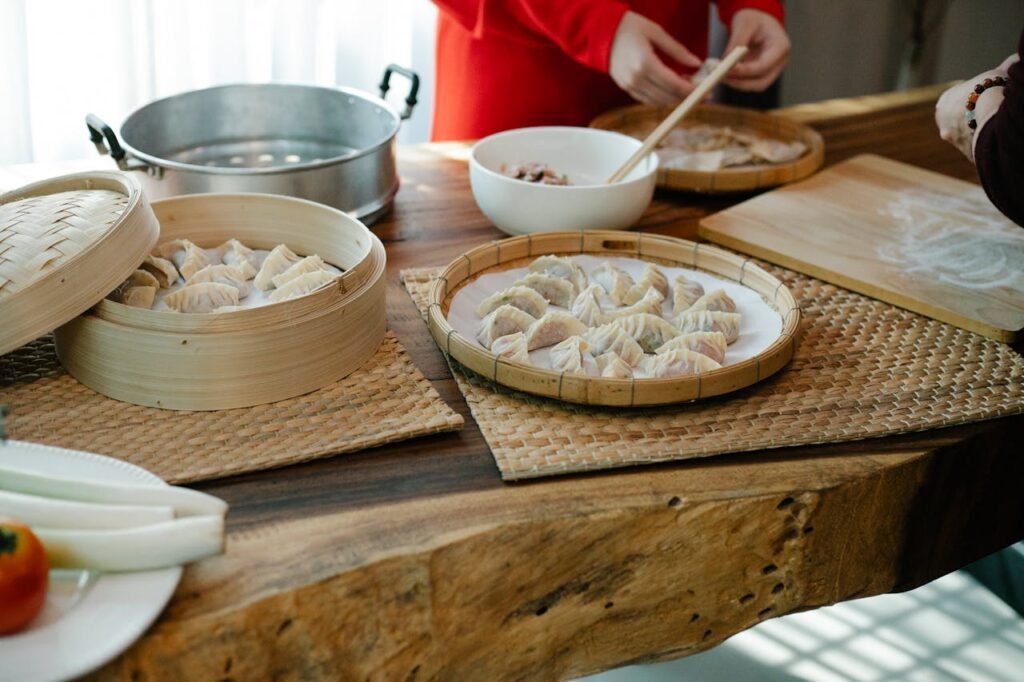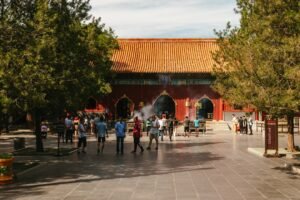

A Culinary Journey: Exploring the 8 Great Cuisines of China
To say you are going out for “Chinese food” is a bit like saying you are going to listen to “European music.” Are you referring to a fiery Spanish flamenco, a delicate Austrian waltz, or a rousing Italian opera? The term is so broad it verges on meaningless. So it is with the culinary landscape of China, a country whose vast geography, diverse climates, and millennia of history have produced not one single “Chinese food,” but a dazzling array of distinct, sophisticated, and deeply rooted culinary traditions.
Food in China is more than mere sustenance; it is a language, a form of medicine, a celebration of history, and a cornerstone of culture. The most famous framework for understanding this diversity is the Eight Great Cuisines of China, or 八大菜系 (Bādà Càixì). This classification, which gained prominence in the late Qing Dynasty, organizes the country’s culinary traditions by their province of origin. Each one boasts a unique philosophy, a signature flavour profile, and techniques honed over centuries.
Embarking on a journey through these eight cuisines is to travel across China with your taste buds. It’s a voyage that will take you from the refined, imperial kitchens of the north to the bountiful coasts of the south, from the fiery, mouth-numbing heartlands of the west to the delicate, fresh flavours of the east. This is your guide to that delicious expedition.
Table of Contents
ToggleA Map of Flavours
The Eight Great Cuisines originate from distinct provinces, each with its own unique agricultural and cultural identity:
- Shandong Cuisine (鲁菜 – Lǔcài): The Imperial Tradition of the North.
- Sichuan Cuisine (川菜 – Chuāncài): The Fiery Soul of the West.
- Guangdong (Cantonese) Cuisine (粤菜 – Yuècài): The Fresh Delicacy of the South.
- Jiangsu Cuisine (苏菜 – Sūcài): The Poetic Refinement of the East.
- Zhejiang Cuisine (浙菜 – Zhècài): The Coastal Freshness of Shanghai’s Neighbor.
- Fujian Cuisine (闽菜 – Mǐncài): The Mountain and Sea Treasures.
- Hunan Cuisine (湘菜 – Xiāngcài): The “Pure” Spice Challenger.
- Anhui Cuisine (徽菜 – Huīcài): The Wild Heart of the Mountains.
Let’s dive into the unique character of each.
1. Shandong Cuisine (鲁菜 – Lǔcài)
Region: Shandong Province (Coastal North)
The Philosophy: As the official cuisine of the imperial courts in Beijing for centuries, Lu Cai is defined by formality, technique, and an emphasis on superior quality ingredients. It is often called the “gourmet’s cuisine” and is known for its clear, fresh, and non-greasy broths (清汤, qīngtāng) and creamy, milky soups (奶汤, nǎitāng). Its proximity to the sea means seafood is prominent, and its position as the “bread basket” of northern China makes wheat-based foods like noodles and dumplings central. The flavour profile is salty and crisp, with a focus on preserving the original taste of the main ingredients.
Key Techniques: Quick-frying with high heat (爆, bào), braising (扒, bā), and a mastery of stocks and soups are hallmarks of Lu Cai.
Signature Dishes:
- Sweet and Sour Carp (糖醋鲤鱼 – Tángcù Lǐyú): A whole carp is skillfully deep-fried until its tail curls upwards, then drenched in a glistening sweet and sour sauce. A true showstopper.
- Braised Sea Cucumber with Scallion (葱烧海参 – Cōngshāo Hǎishēn): A luxurious dish showcasing the chef’s technical prowess, where rehydrated sea cucumber is braised in a rich, savoury sauce infused with the deep flavour of scorched scallions.
- Dezhou Braised Chicken (德州扒鸡 – Dézhōu Bājī): A whole chicken is braised so perfectly that the meat is succulent and falls right off the bone with a gentle nudge from a chopstick.
2. Sichuan Cuisine (川菜 – Chuāncài)
Region: Sichuan Province (Southwest)
The Philosophy: If Lu Cai is the dignified statesman, Chuan Cai is the passionate, fiery artist. This is arguably the most popular Chinese cuisine outside of China, famous for its bold, pungent, and complex flavours. The defining characteristic is the unique sensation known as 麻辣 (málà), which translates to “numbing and spicy.” This comes from the masterful combination of fiery chili peppers (辣, là) and the citrusy, mouth-numbing Sichuan peppercorn (麻, má). But it is not just about heat; Sichuan cuisine boasts a “hundred dishes, hundred flavours” philosophy, utilizing seven basic flavours (sour, pungent, hot, sweet, bitter, aromatic, and salty) to create endlessly complex taste profiles.
Key Techniques: Liberal use of garlic, ginger, chili, and Sichuan peppercorns. Pickling, stir-frying, and slow-braising are common.
Signature Dishes:
- Mapo Tofu (麻婆豆腐 – Mápó Dòufu): A world-famous dish of soft tofu cubes set in a fiery, bright red sauce of fermented broad bean paste, ground meat (traditionally beef), and a generous dusting of ground Sichuan peppercorns.
- Kung Pao Chicken (宫保鸡丁 – Gōngbǎo Jīdīng): A globally beloved stir-fry of diced chicken, peanuts, and dried chilies in a balanced sauce that is simultaneously sweet, sour, and savoury with a hint of numbing spice.
- Fish-Fragrant Eggplant (鱼香茄子 – Yúxiāng Qiézi): The name is deceiving—there is no fish involved. “Fish-fragrant” refers to a specific flavour profile of pickled chilies, garlic, ginger, and scallions that was traditionally used to cook fish. The eggplant is stir-fried until meltingly tender in this addictive sauce.
3. Guangdong (Cantonese) Cuisine (粤菜 – Yuècài)
Region: Guangdong Province (South)
The Philosophy: Cantonese cuisine is perhaps the most internationally recognized, thanks to early waves of emigration from Guangdong. Its philosophy can be summarized in one word: freshness. The goal of a Cantonese chef is not to mask or transform ingredients with heavy sauces, but to enhance their natural, pristine flavours. It features a vast array of ingredients, from prized seafood to every imaginable part of an animal. Flavours are mild, fresh, and natural. This is the home of dim sum (点心 – diǎnxīn), the famous brunch tradition of small, shareable plates.
Key Techniques: Steaming and stir-frying are paramount to preserve the texture and flavour of fresh ingredients. Roasting is also a specialty.
Signature Dishes:
- Steamed Fish (清蒸鱼 – Qīngzhēng Yú): The ultimate test of a Cantonese chef. A whole fish is steamed to perfection with slivers of ginger and scallion, then dressed at the table with sizzling hot oil and light soy sauce.
- Char Siu (叉烧 – Chāshāo): Barbecued pork marinated in a sticky, sweet, and savoury glaze of honey, five-spice powder, and fermented tofu, then roasted to achieve a perfectly charred exterior while remaining succulent inside.
- Shrimp Dumplings (虾饺 – Xiājiǎo): A classic dim sum item. Plump, pink shrimp are encased in a delicate, translucent wrapper, pleated with incredible skill, and steamed to perfection.
4. Jiangsu Cuisine (苏菜 – Sūcài)
Region: Jiangsu Province (East Coast, near Shanghai)
The Philosophy: Often served at state banquets, Su Cai is the epitome of elegance and refinement. Hailing from a prosperous “land of fish and rice,” this cuisine emphasizes exquisite presentation, delicate flavours, and interesting textures. Dishes are often slightly sweet, and chefs are masters of braising and stewing, creating rich but not heavy flavours. There is a strong focus on seasonality and creating dishes that are as beautiful to look at as they are to eat, reflecting the region’s poetic and artistic heritage.
Key Techniques: Meticulous knife skills, extended stewing and braising to achieve concentrated flavours and soft textures.
Signature Dishes:
- Lion’s Head Meatballs (狮子头 – Shīzitóu): Large, incredibly light and tender pork meatballs, often stewed with cabbage in a savoury broth. They are named for their resemblance to a lion’s head.
- Squirrel-Shaped Mandarin Fish (松鼠桂鱼 – Sōngshǔ Guìyú): A testament to knife skills, a whole deboned fish is artfully cut to resemble a squirrel, then deep-fried and covered in a sweet and sour sauce.
- Nanjing Salted Duck (南京盐水鸭 – Nánjīng Yánshuǐ Yā): A deceptively simple-looking dish where a duck is brined in a salt and spice mixture, then gently poached, resulting in incredibly tender meat with a clean, savoury flavour.
This culinary exploration reveals so much more than just recipes; it’s a window into the soul of a region. Understanding that a málà flavour profile comes from Sichuan or that a focus on qīngzhēng (steaming) is a hallmark of Cantonese cooking deepens your appreciation immensely. Of course, the best way to understand the menu is to learn the language it’s written in. For those in Oslo inspired by this journey, NLS Norwegian Language School offers a path to do just that. Their 1-to-1 classes can help you decode not just the menu, but the rich culture behind every dish. You can start your linguistic and culinary adventure here.
5. Zhejiang Cuisine (浙菜 – Zhècài)
Region: Zhejiang Province (East Coast, south of Shanghai)
The Philosophy: Located on a fertile coastline near Shanghai, Zhejiang cuisine is known for its freshness, tenderness, and mellow, clean flavours. It shares some similarities with Jiangsu cuisine but is generally less elaborate and sweet. It’s often described as being “fresh, crisp, and delicate.” The cuisine is famous for its use of fresh seafood, freshwater fish, and bamboo shoots.
Key Techniques: Sautéing, steaming, and braising. The application of Shaoxing wine, a famous product of the region, is common.
Signature Dishes:
- Dongpo Pork (东坡肉 – Dōngpō Ròu): A cube of fatty pork belly is pan-fried, then slow-braised in a fragrant mixture of soy sauce, sugar, and Shaoxing wine until it is so tender it melts in your mouth. Named after the famous Song Dynasty poet Su Dongpo.
- West Lake Fish in Vinegar Gravy (西湖醋鱼 – Xīhú Cùyú): A grass carp from Hangzhou’s famous West Lake is poached and then coated in a delicate, glossy, sweet-and-sour black vinegar sauce.
- Longjing Shrimp (龙井虾仁 – Lóngjǐng Xiārén): Fresh river shrimp are stir-fried with the leaves of Longjing (Dragon Well) green tea, one of China’s most famous teas. The result is a subtle, elegant, and aromatic dish.
6. Fujian Cuisine (闽菜 – Mǐncài)
Region: Fujian Province (Southeast Coast)
The Philosophy: With its mountainous terrain and long coastline, Fujian cuisine is defined by the concept of “mountain and sea treasures.” It is particularly renowned for its soups and its skillful use of “drunken” cooking methods, where ingredients are marinated or cooked in copious amounts of rice wine. The flavours are often a complex mix of sweet, sour, and savoury, with a particular emphasis on umami, derived from ingredients like fermented fish sauce and shrimp paste.
Key Techniques: Braising, stewing, and steaming. Mastery of soup-making is considered the pinnacle of the cuisine.
Signature Dishes:
- Buddha Jumps Over the Wall (佛跳墙 – Fó Tiào Qiáng): One of the most luxurious and complex dishes in all of Chinese cuisine. Up to thirty ingredients, including shark fin, sea cucumber, abalone, and quail eggs, are slowly simmered for days in a rich broth with Shaoxing wine. The name suggests it’s so delicious that even a vegetarian Buddha would jump over a monastery wall to taste it.
- Drunken Chicken (醉鸡 – Zuì Jī): Chicken is steamed, then marinated in a potent bath of Shaoxing wine, resulting in a cold dish that is intoxicatingly fragrant and flavourful.
- Lychee Pork (荔枝肉 – Lìzhī Ròu): Small pieces of pork are deep-fried and served in a sweet and sour sauce, with the pork skillfully cut to resemble lychee fruit.
7. Hunan Cuisine (湘菜 – Xiāngcài)
Region: Hunan Province (Central China)
The Philosophy: If Sichuan cuisine’s spiciness is málà (numbing and spicy), Hunan cuisine is known for its 干辣 (gānlà), or “dry spice.” It is often considered even spicier than Sichuan food because it lacks the numbing effect of the Sichuan peppercorn, resulting in a purer, more ferocious heat. The liberal use of fresh chilies, shallots, and garlic creates a flavour profile that is hot, sour, and deeply savoury.
Key Techniques: Stewing, stir-frying, and curing (producing delicious smoked and cured meats).
Signature Dishes:
- Steamed Fish Head with Diced Chilies (剁椒鱼头 – Duòjiāo Yútóu): A large fish head is steamed and then blanketed in a vibrant carpet of red and green diced chili peppers. It is fiery, savoury, and visually stunning.
- Mao’s Braised Pork Belly (毛氏红烧肉 – Máo Shì Hóngshāoròu): A favourite dish of Chairman Mao Zedong, this is a richer, spicier, and less sweet version of the classic red-braised pork belly, often using chili and fermented bean curd for a deeper flavour.
- Stir-fried Cauliflower with Cured Pork (干锅花菜 – Gānguō Huācài): A “dry pot” dish where cauliflower is stir-fried with thin slices of delicious, smoky Hunanese cured pork and chilies, served sizzling in a mini wok.
8. Anhui Cuisine (徽菜 – Huīcài)
Region: Anhui Province (Inland East, near the Yellow Mountains)
The Philosophy: Anhui cuisine is the rustic, hearty cooking of the mountains. It relies heavily on wild ingredients foraged from the local forests, such as bamboo, mushrooms, and wild herbs. The food is less refined than its coastal neighbours, with a focus on simple, robust flavours. It is known for its heavy use of oil, soy sauce, and its famous fermented and cured ingredients, like “stinky tofu” and cured hams.
Key Techniques: Braising and stewing are key. There is a saying: “It is good if it is heavily oiled, it is tasty if it is deeply coloured, and it is a masterpiece if it is thoroughly stewed.”
Signature Dishes:
- Stinky Mandarin Fish (臭鳜鱼 – Chòu Guìyú): This dish is a challenge for some but a delicacy for others. A fresh mandarin fish is lightly salted and fermented for several days until it develops a strong odour, then it is pan-fried or braised. The resulting flesh is surprisingly firm and flavourful.
- Egg Dumplings (蛋饺 – Dàn Jiǎo): A local specialty where a thin egg crepe is used as the wrapper for a savoury pork filling, often served in soups and hot pots.
- Li Hongzhang Hotchpotch (李鸿章杂烩 – Lǐ Hóngzhāng Záhuì): A rich, complex stew of many ingredients, including chicken, ham, sea cucumber, and vegetables, named after a famous Qing Dynasty official from the region.
Your Culinary Journey in Oslo
Exploring these eight great cuisines is a lifelong adventure, but you can start right here in Oslo. The next time you visit a Chinese restaurant, look closer at the menu. Is it Cantonese-style chāshāo? Or is there a fiery Sichuan mápó dòufu hidden among the options? Being able to recognize these regional specialties can transform your dining experience. Imagine the delight of a chef when you, a Norwegian diner, ask if their Dōngpō Ròu is made in the authentic Zhejiang style. Speaking even a few words of Mandarin, asking about the tèsè cài (特色菜 – special dishes), can open up a new level of interaction and appreciation.
Conclusion: A Language of Flavour
The Eight Great Cuisines of China offer a delicious and accessible entry point into the country’s immense cultural diversity. Each dish tells a story of a place, a history, and a people. To taste Lǔcài is to taste the legacy of emperors. To taste Chuāncài is to feel the fiery spirit of the Sichuan basin. To taste Yuècài is to appreciate the bounty of the southern seas. Food is a universal language, but learning the language that describes it adds an unparalleled layer of depth and understanding.
After this “taste” of Chinese culture, perhaps you are hungry for more. Learning Mandarin can be your passport to a deeper exploration, allowing you to read the poetry that inspired the dishes, understand the history that shaped them, and connect with the people who create them.
Are you ready to continue the journey? Go beyond the menu and dive into the language that brings Chinese culture to life. The NLS Norwegian Language School offers tailored 1-to-1 classes to guide you. Start your adventure today and discover a whole new world of flavour and understanding. Register and learn more at Learn Chinese – Norwegian Language School.
If you want to learn Norwegian, you can register for classes here. We look forward to hearing from you and helping you become fluent in Norwegian.





